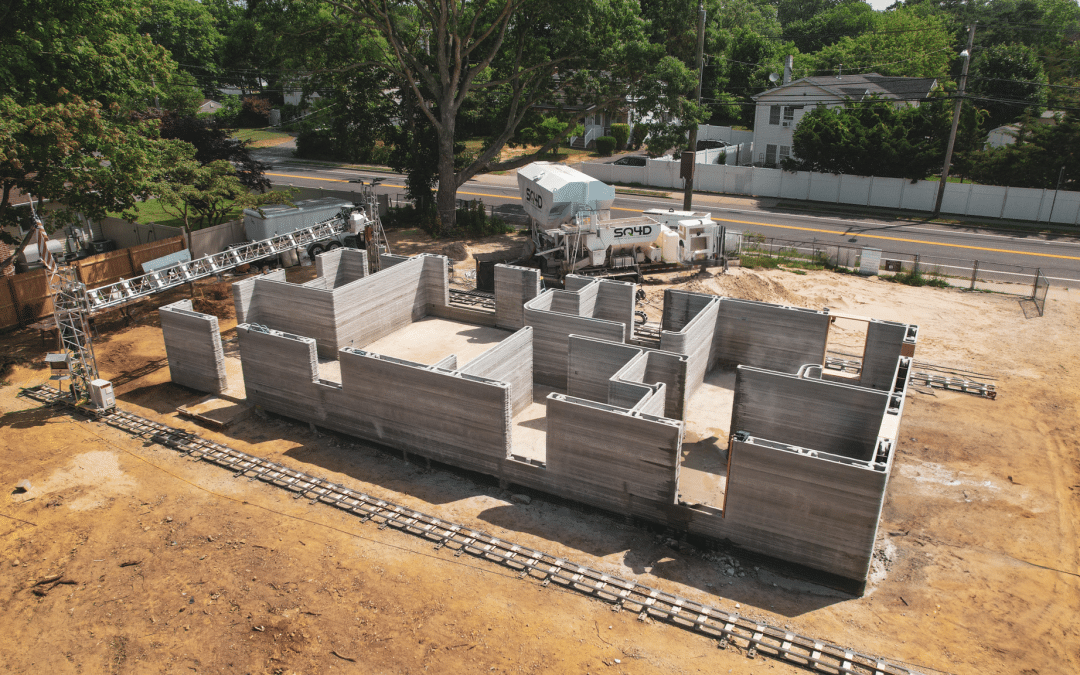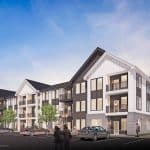Summary
Digital construction promises to build houses faster and more affordably than traditional construction methods. But can these technologies print something Americans would want to live in? One company says they will sell…and they are selling.
Many real estate agents had more housing inventory on their Christmas lists this holiday season. While that seems like a big ask, given the trends in new construction over the past couple of years, it may be a wish that’s not so far from being granted.
Digital construction promises to build houses faster and more affordably than traditional construction methods. Stories have come to us from other countries, where concrete printers create dwellings for at-risk populations.
But can these technologies print something Americans would want to live in? One company says they will sell…and they are selling.
Long Island, New York-based SQ4D Inc., a company that uses automated building methods, or 3D printing, to build structures and homes, sold a house on Long Island this year and plans to build more.
The company built one of its homes on Long Island in the town of Riverhead. The structure was printed in about 80 hours and was listed by Zillow Premier real estate agent Stephen King for $299,999, a price King says is half the cost of similar homes in that market.
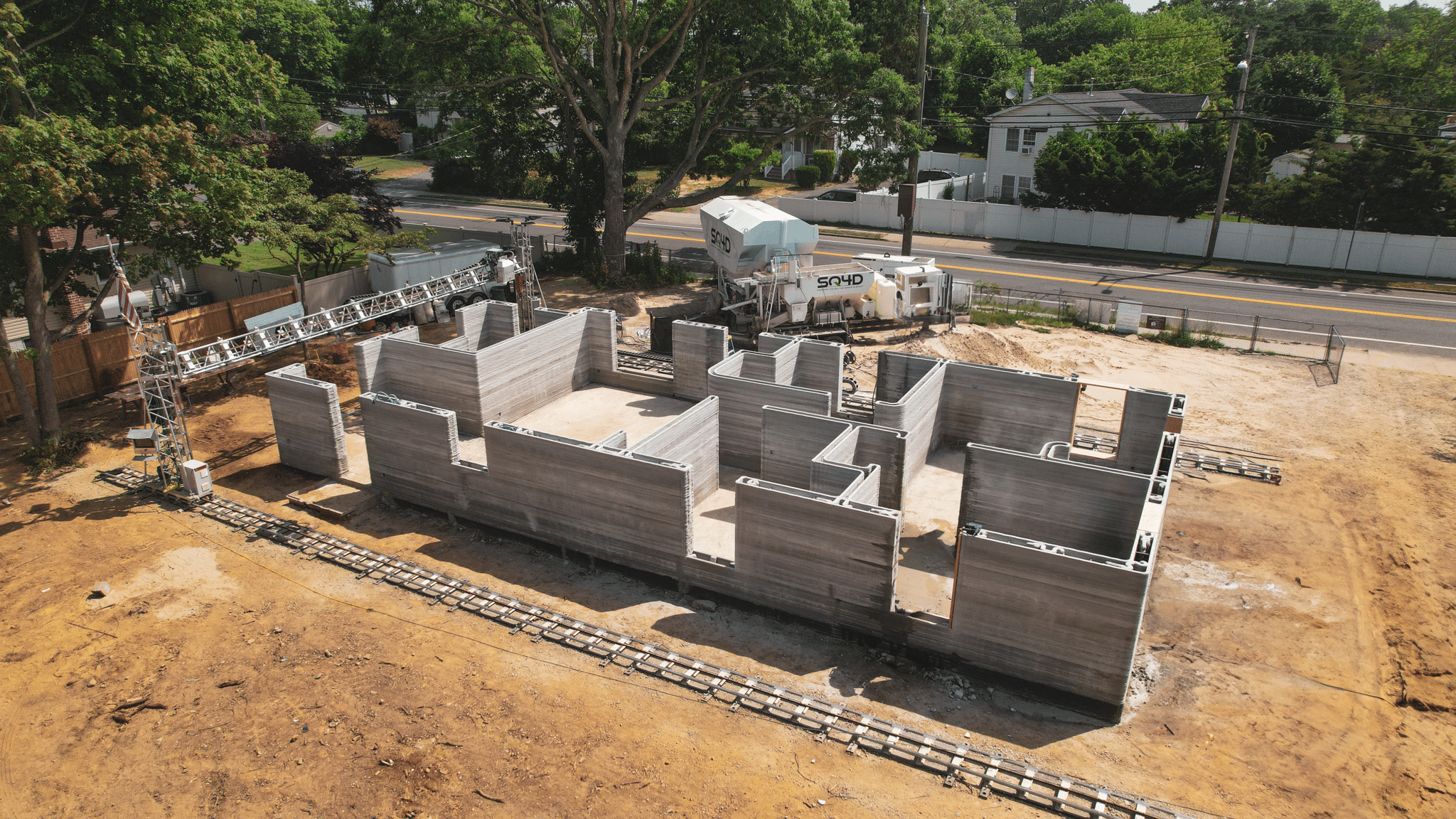
A 3D-printed home under construction by SQ4D.
Affordability is only one of the advantages the company says its new technology brings to the market.
The Difference 3D Printing Brings to Residential Construction
Kristen Henry is a Yale-trained engineer who joined SQ4D and within a year was promoted to Chief Technology Officer. At 25, she is the youngest person to make this year’s Business Insider “20 Under 35” list.
She has driven the development of the company’s Max Autonomous Robotic Construction System (ARCS). We visited with her about her company’s project on Long Island and what its technology could do for the industry.
According to Henry, 3D-printed homes come with a lot of advantages, including durability, sustainability, energy efficiency, accessibility, and design flexibility. But the benefits that will likely appeal most to the industry are labor efficiency, speed of construction and cost efficiency.
Traditional construction projects can take several months to complete. 3D-printed homes, however, can be erected in a matter of days or weeks, reducing labor costs and getting homebuyers through the process faster. At the same time, the technology reduces the dependence on skilled labor, mitigating the impact of labor shortages and ensuring consistent construction quality.
But the big one is the price. The savings come from two places, the reduction in labor costs and the reduction in material waste. When it’s all added up, Henry says the company has built homes on Long Island for about $99 per square foot, a market that normally sees costs in the $150-$330 per square foot range.
Of course, just because you build it for less doesn’t mean you can sell it for less. Remember that SQ4D house Stephen King listed in Riverhead? By the time it sold, Henry says the home received offers as high as $550,000, putting it back into the range of comparable homes in the market.
While this should be very exciting to investors interested in using this technology to build starter homes, and the real estate agents who want to sell them, it can be a bit of a letdown for young people out to change the world.
So Henry found another way to make her company’s homes affordable.
Partnering with a Non-Profit to Provide Affordable Housing
Henry had experience volunteering her time to Habitat for Humanity. She wondered if the nonprofit on Long Island would be interested in working with SQ4D. She set out to forge a partnership.
Founded in 1976, Habitat for Humanity of Long Island operates locally to improve living conditions and advocate for policy reforms that remove barriers for low-income families. The nonprofit also educates new homeowners on home maintenance, repairs, and financial management to ensure long-term success.
“I was very excited about the opportunity to see the cost savings go to the homeowners,” she told Weekly Real Estate News. “The market will price homes according to demand, but with Habitat we could pass the savings along.”
Together with a number of other companies and volunteers, the partnership resulted in a 1,600-square-foot, 4-bedroom, 2-bath home in Brentwood, NY, complete with radiant floor heating. It’s the first 3D-printed home the Long Island nonprofit has made available to a local family.
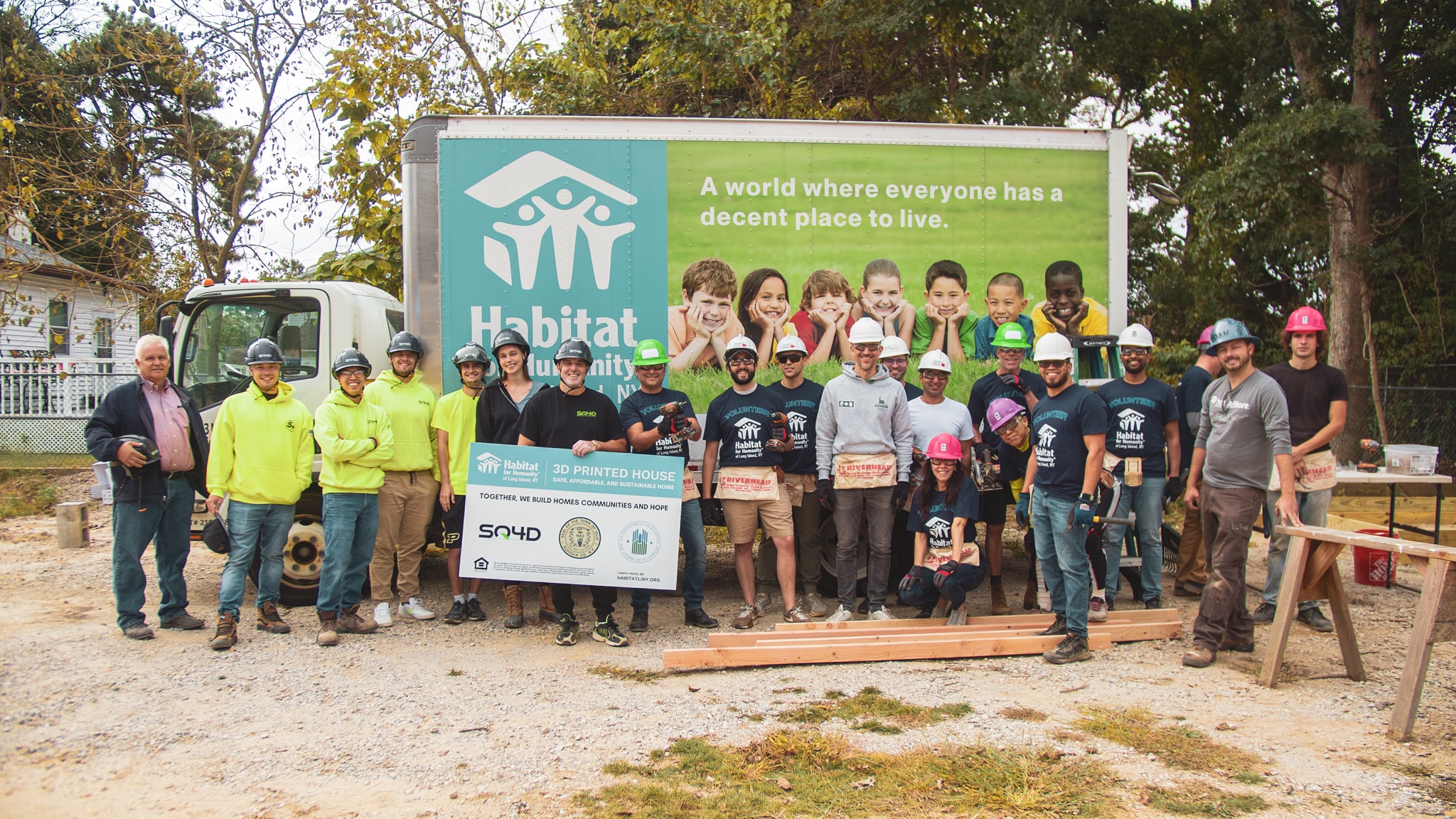
The team of volunteers from SQ4D.
Diane Manders, Habitat for Humanity of Long Island’s Interim CEO/Executive Director, expressed her excitement about the project: “Our 3D-printed home in Brentwood is a groundbreaking achievement made possible through a collaboration with the Town of Islip, the Department of Housing and Urban Development, and SQ4D. This home represents a transformative step for our organization and the Long Island community.”
SQ4D worked alongside a number of firms during the construction of this home, among them Forte Construction Corp., Islandia, New York, a premier general contractor known for its public work in the New York metropolitan area. Forte has completed projects for various governmental agencies, including NYCT, MTA, LIRR, SCA, NYCHA, and DASNY.
This is the fourth consecutive year, Forte has proudly partnered with Habitat for Humanity of Long Island.
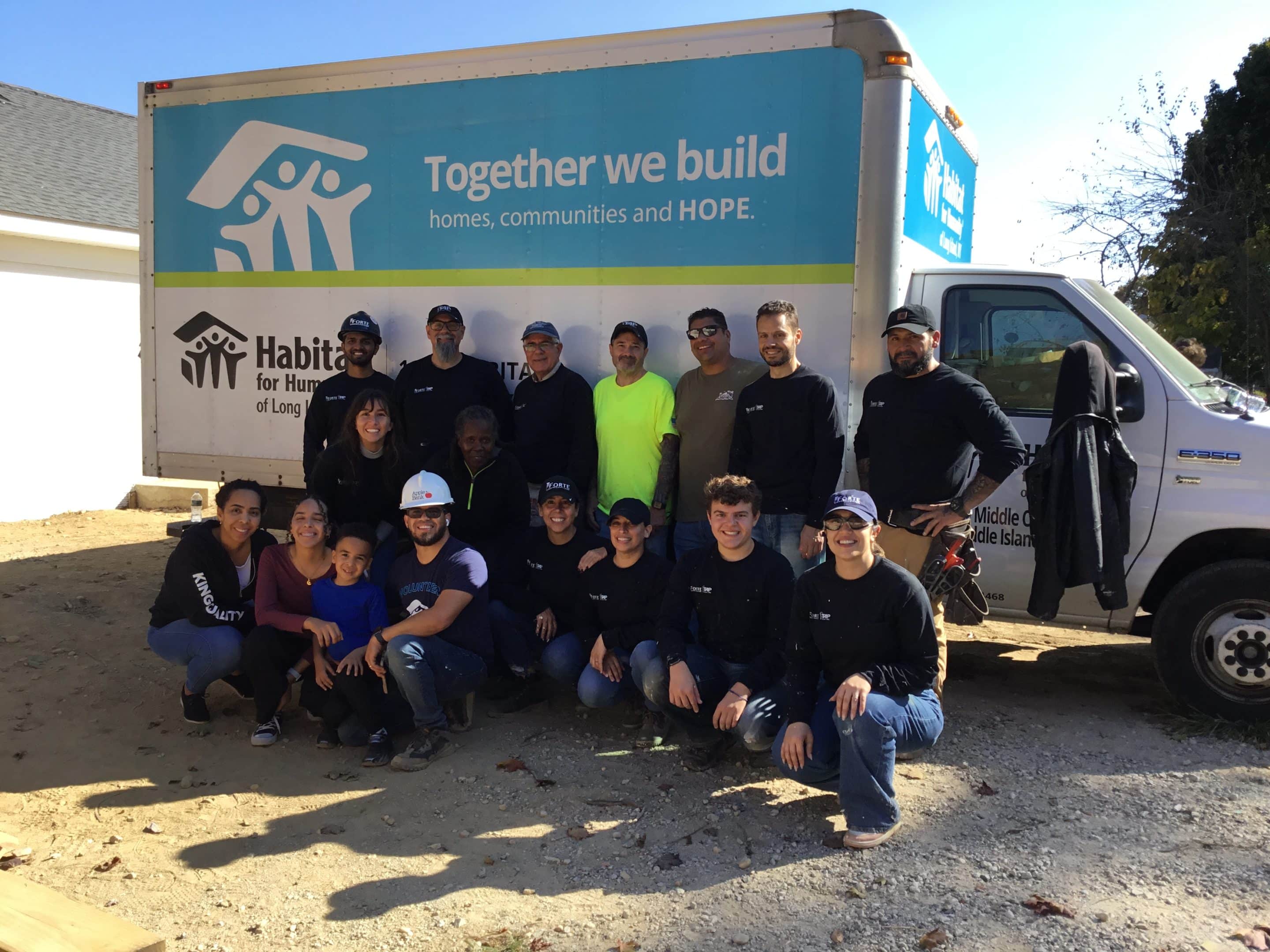
The team of volunteers from Forte Construction.
“We are deeply grateful for Forte Construction’s partnership over the past four years,” Manders said. “Their dedication has enabled us to expand affordable housing opportunities and support even more local families.”
A dedicated team of 13 Forte employees and family members volunteered for a day of contributions, including caulking, painting, aluminum work, and the installation of window boxes. Forte Vice President Jeffrey R. Cardillo, a master electrician by trade, assisted in the preparation of the home’s electrical closet installation.
“To be able to give back is a privilege that Forte Construction does not take lightly,” Cardillo said. “Habitat for Humanity offers the perfect opportunity for our team to make a significant difference in the lives of our fellow Long Islanders, utilizing the unique skills we have honed over decades of working in the construction and electrical field.”
Will the Future of Housing be Printed?
While Henry says her company’s ARCS technology will definitely be a major factor in the future of American homebuilding, SQ4D probably won’t be building those homes.
“New York is our test bed,” Henry said. She pointed out that New York’s regulatory structure made new construction complex and Long Island doesn’t have much land to build on. “We knew that if you could build 3D-printed homes here, you could build them anywhere.”
The company plans to build a 25-home community in Riverhead, New York, but Henry says going forward, the company will focus on selling its ARCS technology to other builders across the country.
A dedication ceremony for the new Brentwood home is scheduled for mid-January.


